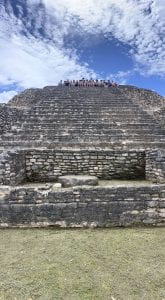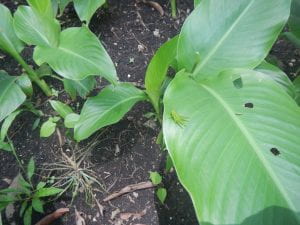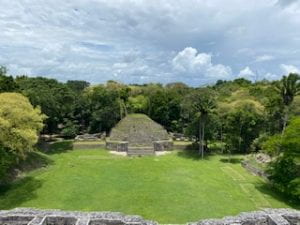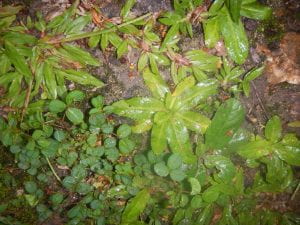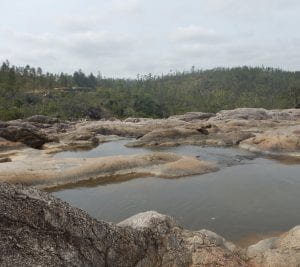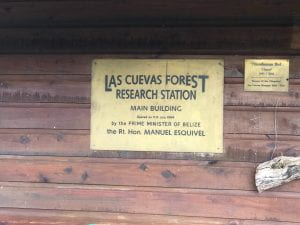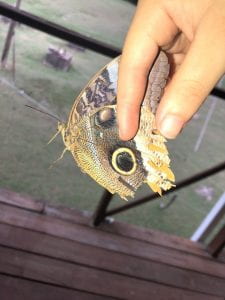Today was definitely the coolest day…so far. Seeing Caracol in person was like nothing I’ve ever experienced, even compared to exploring other ancient structures like the Colluseum. I think part of what made the experience so special was the absolute overwhelm of the rainforest. Driving for hours through pristine, preserved forests created a real build-up, as I could truly picture the Mayan worldview and landscape. Also, being the only group trouring Caracol today cast the whole trip in an almost ethereal light-as if we were the only ones who got to enter some other-worldly dimension. It was fascinating to hear about the Mayan religious practices, something that appears to transcend all time and borders. Hearing about the blood letting, sacrifices, and extreme sports they played (10 pound balls?!) made me wonder which practices or rituals I partake in that would make future civilizations raise an eyebrow.
Turning to the rainforest more broadly, it was cool to get a little taste of what the rest of our stay at LCRS will look like. Although I am a bit wary of flying insects, I really enjoyed the thrill of stepping into the unknown underbrush. There is so much more complexity to the rainforest than I could ever comprehend. From the epyphytes to the complex paradox of the rainforest soil, it feels like every single part of the landscape is just as, if not more alive than me. LCRS is truly situated in such a fascinating spot, and I am happy I get to spend nearly a week exploring here.
Still, I have not stumbled across any cockroaches. My presentation this evening went smoothly and I learned that the Giant Cockroach nyphs have a unique defense mechanism: secreting a sticky, stinky substance that repulses its predators. I am hoping to turn over a couple logs in the forest tomorrow and finally have my first spotting!
-Emily













